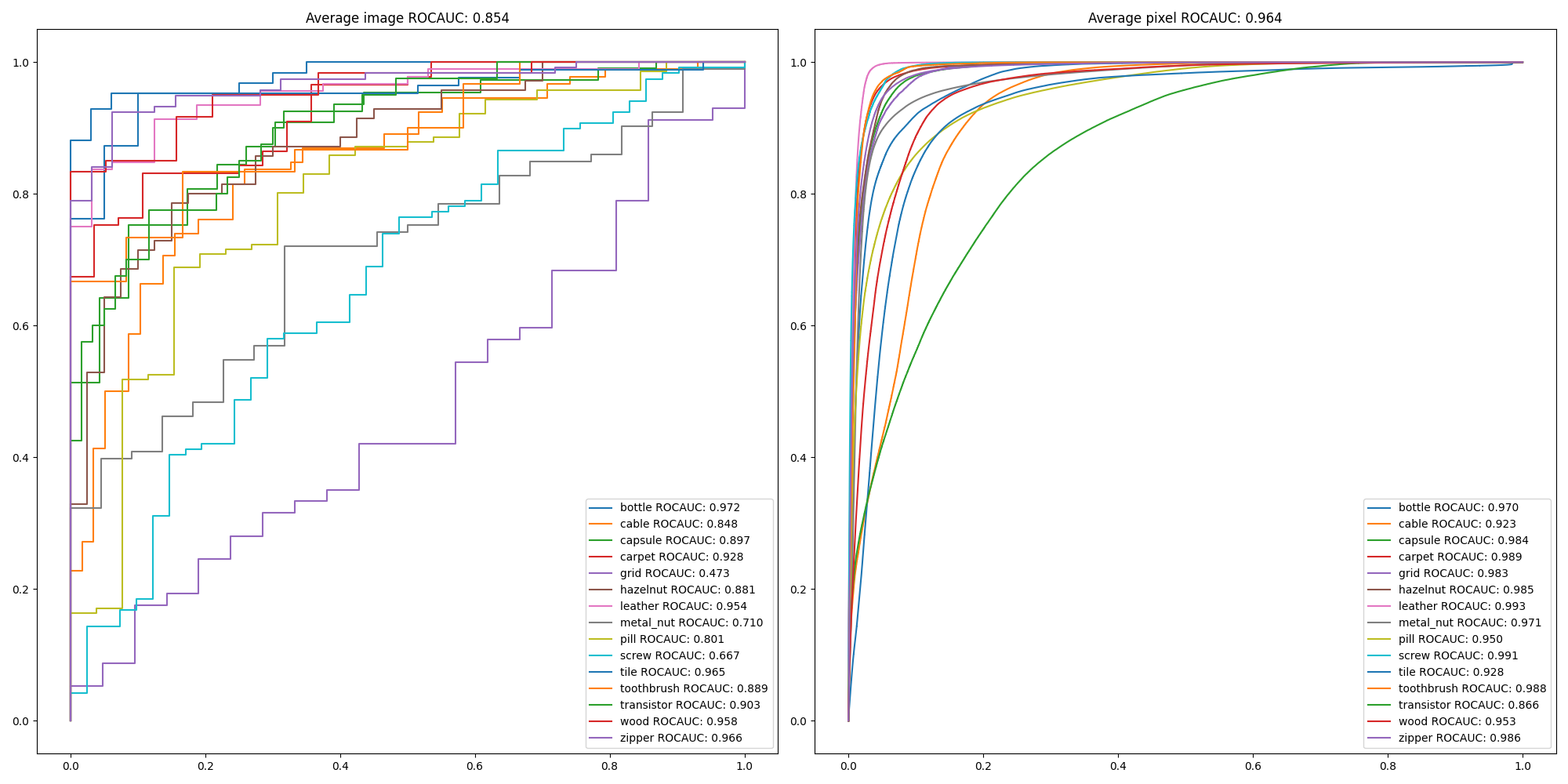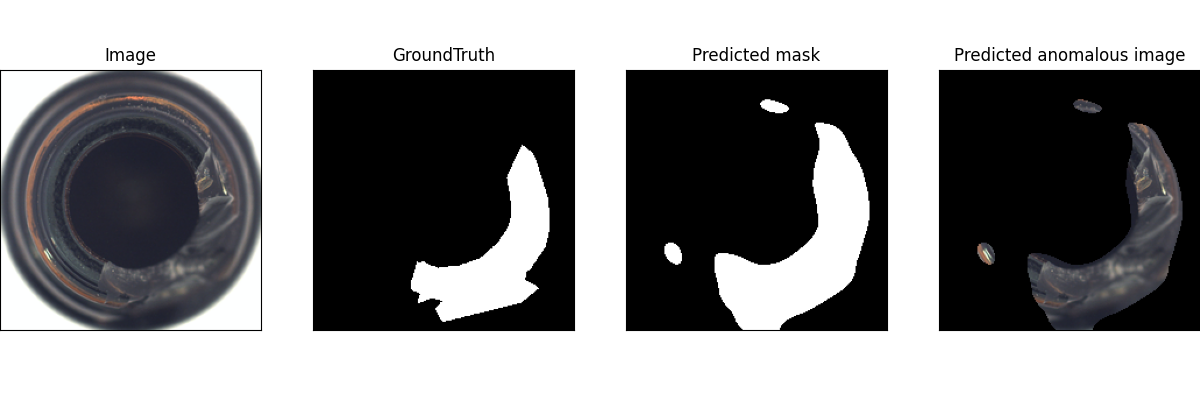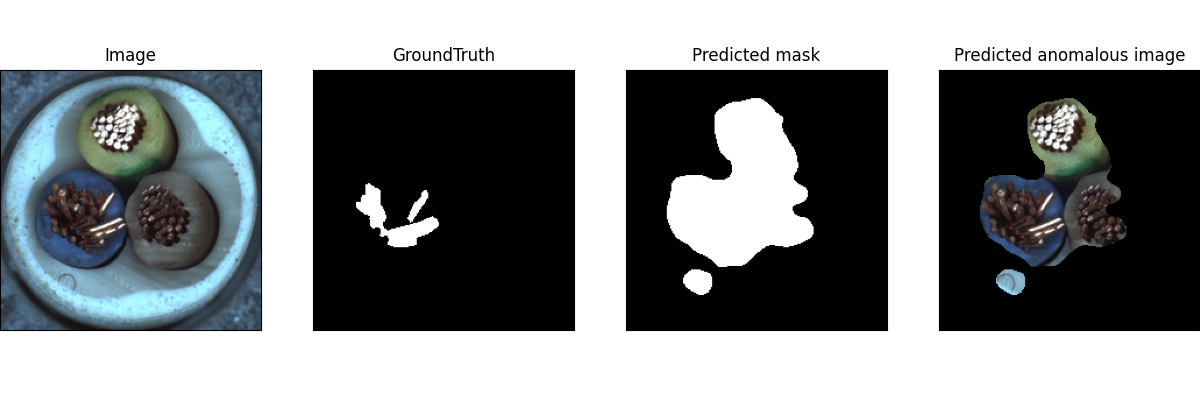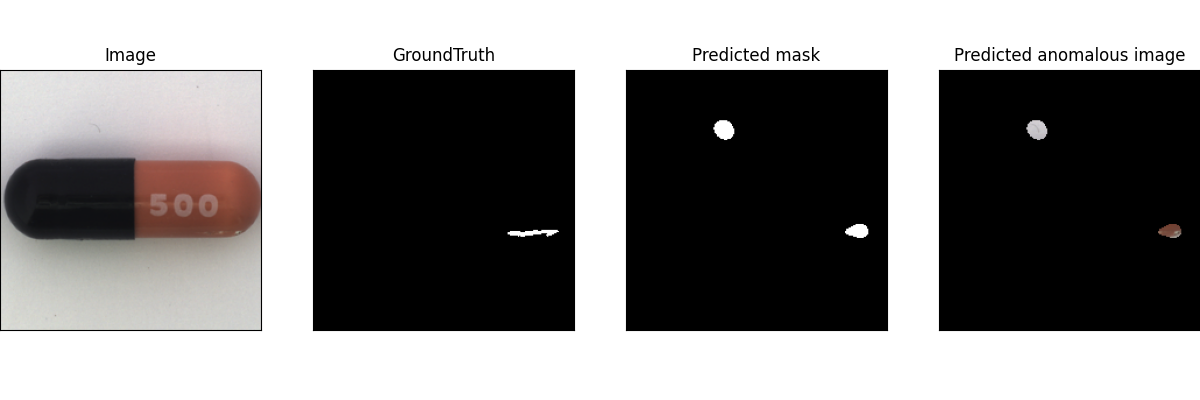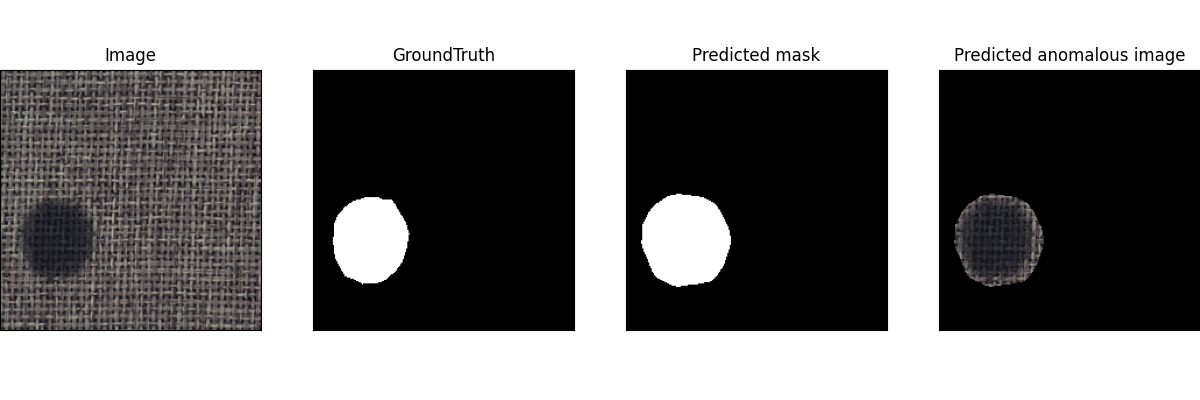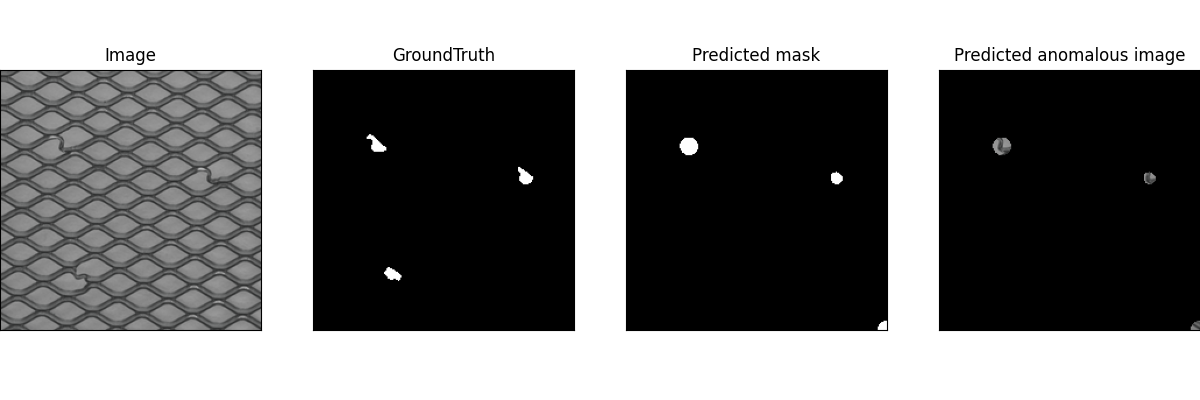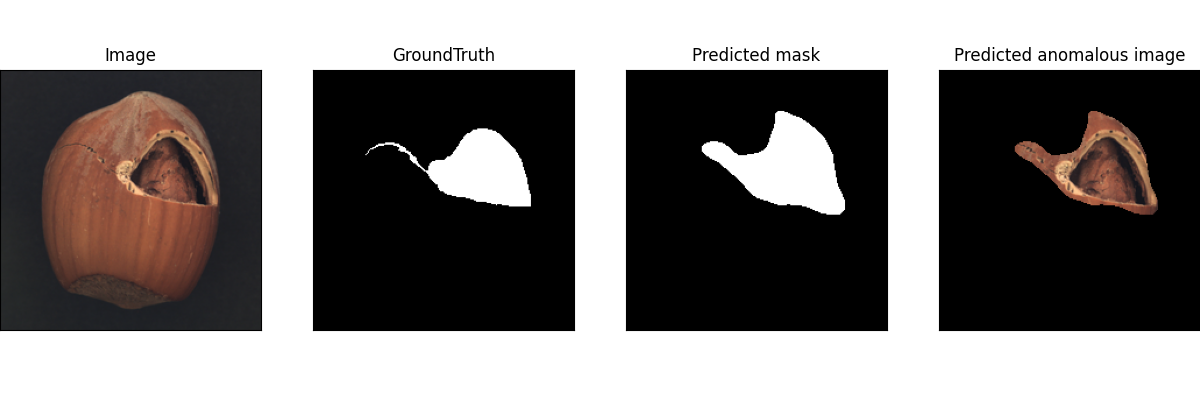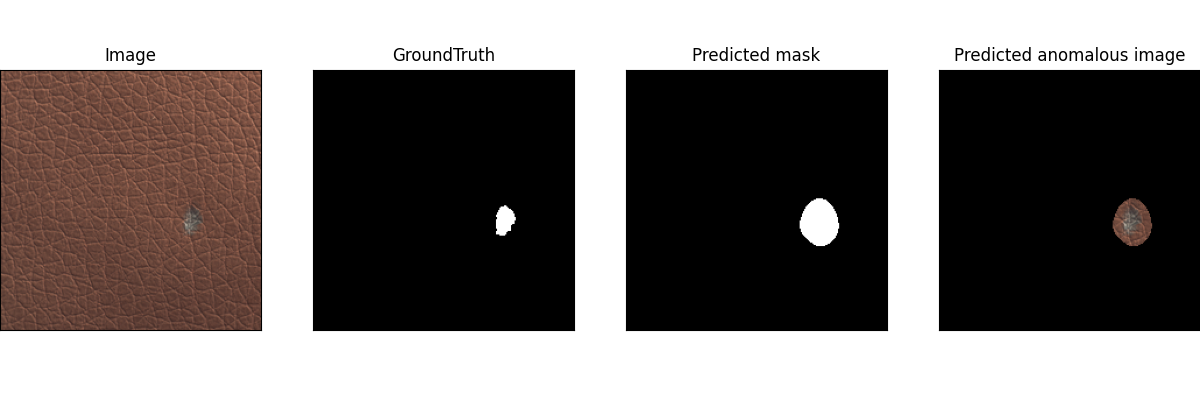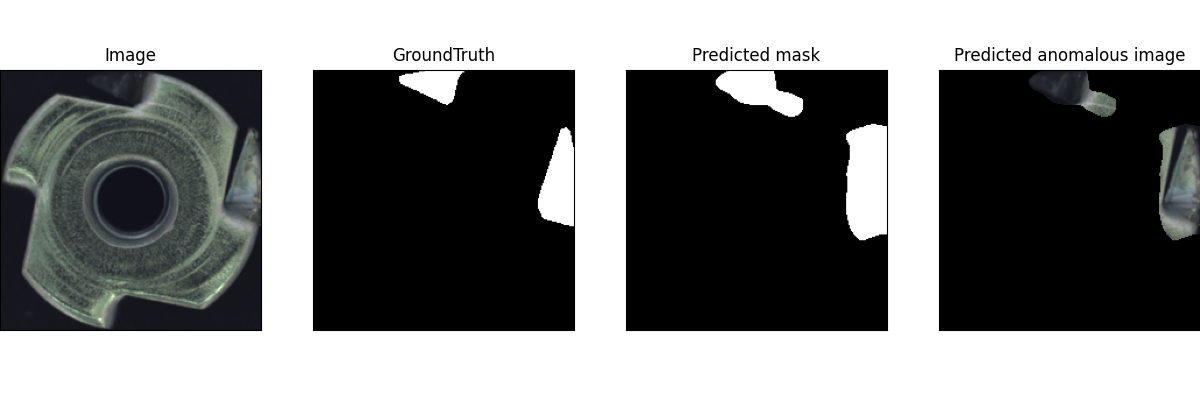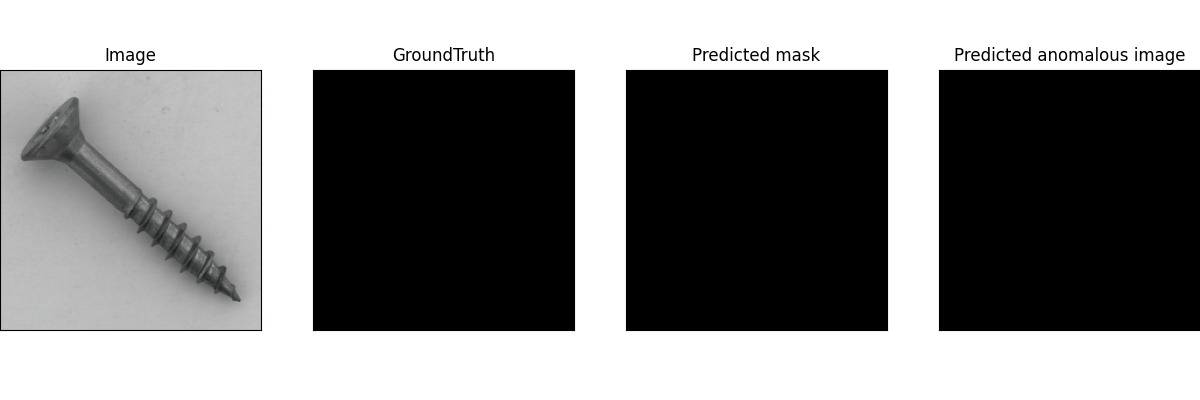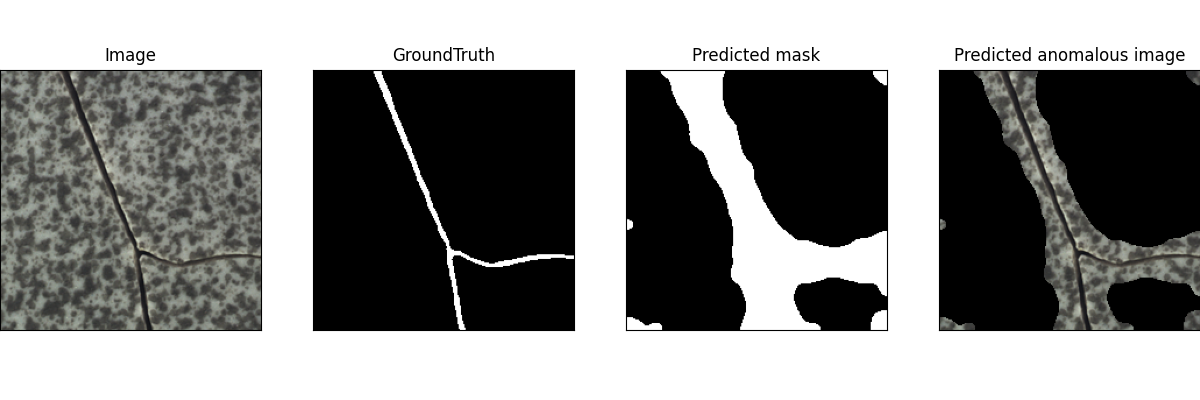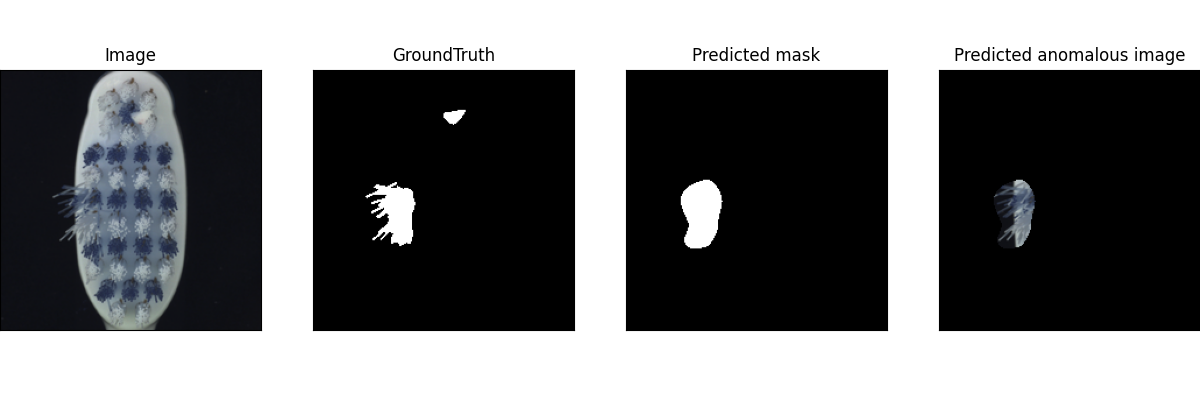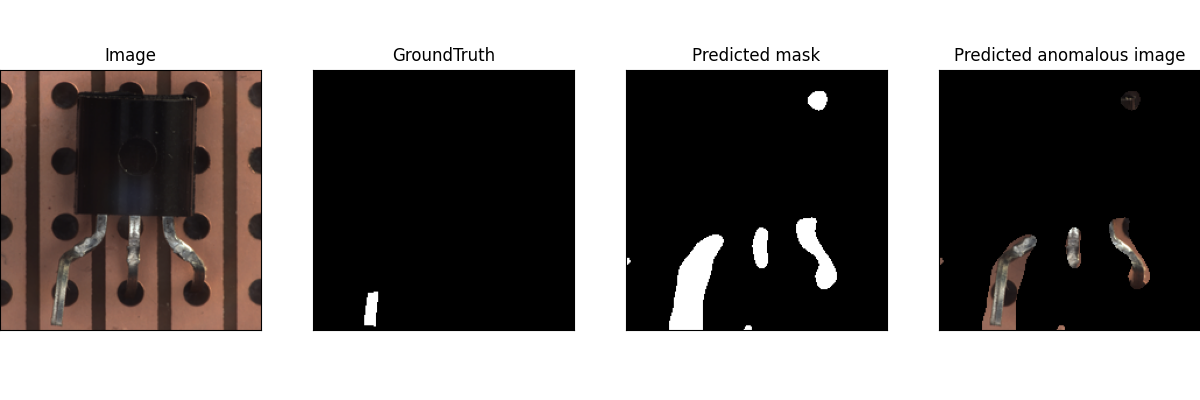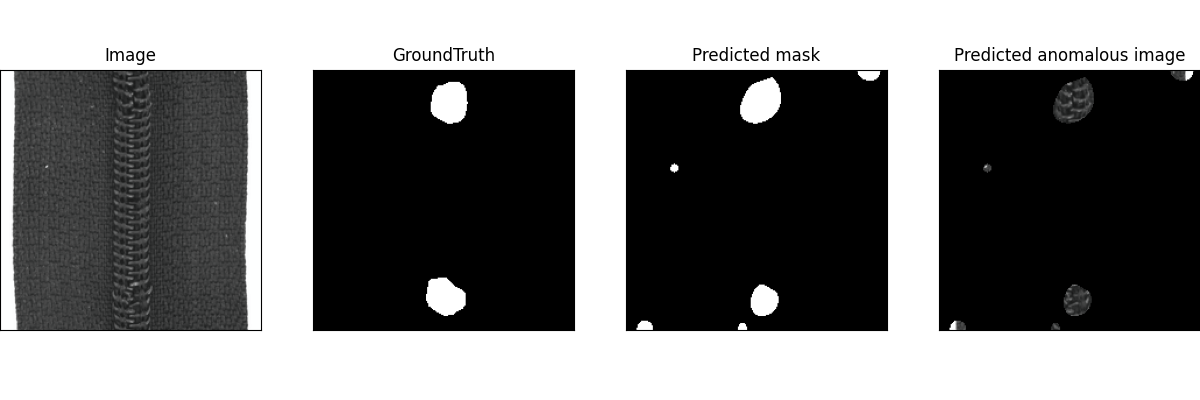PyTorch implementation of Sub-Image Anomaly Detection with Deep Pyramid Correspondences (SPADE).
SPADE presents an anomaly segmentation approach which does not require a training stage.
It is fast, robust and achieves SOTA on MVTec AD dataset.
- We used K=5 nearest neighbors, which differs from the original paper K=50.
- python 3.6+
- PyTorch 1.5+
- sklearn, matplotlib
Install prerequisites with:
pip install -r requirements.txt
If you already download MVTec AD dataset, move a file to data/mvtec_anomaly_detection.tar.xz.
If you don't have a dataset file, it will be automatically downloaded during the code running.
To test SPADE on MVTec AD dataset:
cd src
python main.py
After running the code above, you can see the ROCAUC results in src/result/roc_curve.png
Below is the implementation result of the test set ROCAUC on the MVTec AD dataset.
| Paper | Implementation | |
|---|---|---|
| bottle | - | 97.2 |
| cable | - | 84.8 |
| capsule | - | 89.7 |
| carpet | - | 92.8 |
| grid | - | 47.3 |
| hazelnut | - | 88.1 |
| leather | - | 95.4 |
| metal_nut | - | 71.0 |
| pill | - | 80.1 |
| screw | - | 66.7 |
| tile | - | 96.5 |
| toothbrush | - | 88.9 |
| transistor | - | 90.3 |
| wood | - | 95.8 |
| zipper | - | 96.6 |
| Average | 85.5 | 85.4 |
| Paper | Implementation | |
|---|---|---|
| bottle | 98.4 | 97.0 |
| cable | 97.2 | 92.3 |
| capsule | 99.0 | 98.4 |
| carpet | 97.5 | 98.9 |
| grid | 93.7 | 98.3 |
| hazelnut | 99.1 | 98.5 |
| leather | 97.6 | 99.3 |
| metal_nut | 98.1 | 97.1 |
| pill | 96.5 | 95.0 |
| screw | 98.9 | 99.1 |
| tile | 87.4 | 92.8 |
| toothbrush | 97.9 | 98.8 |
| transistor | 94.1 | 86.6 |
| wood | 88.5 | 95.3 |
| zipper | 96.5 | 98.6 |
| Average | 96.5 | 96.4 |
